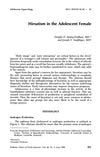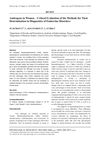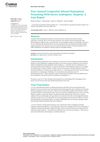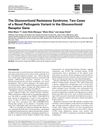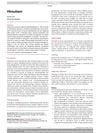The Treatment of Opioid Addiction Leading to Secondary Adrenal Insufficiency
November 2022
in “
Journal of the Endocrine Society
”
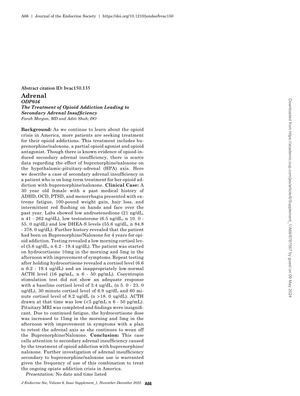
TLDR Long-term treatment with buprenorphine/naloxone for opioid addiction may lead to secondary adrenal insufficiency.
This document reports a case of secondary adrenal insufficiency in a 30-year-old female patient undergoing long-term treatment with buprenorphine/naloxone for opioid addiction. The patient presented with symptoms including extreme fatigue, significant weight gain, hair loss, and intermittent red flushing. Laboratory tests revealed low levels of androstenedione, testosterone, DHEA-S, and morning cortisol, indicating adrenal insufficiency. After starting treatment with hydrocortisone, the patient's symptoms improved. However, a cosyntropin stimulation test showed an inadequate adrenal response, and an MRI of the pituitary gland showed no significant findings. The patient's hydrocortisone dose was increased due to persistent fatigue, with plans to retest the adrenal axis as she weans off buprenorphine/naloxone. The case highlights the need for further investigation into the potential for buprenorphine/naloxone treatment to cause secondary adrenal insufficiency, considering the widespread use of this medication combination in addressing the opioid crisis in America.
